Looking Up: Louis Tomlinson on finding the sunnier side to life
After a challenging few years that saw him lose some of those closest to him, Louis Tomlinson is determined to celebrate life through music, with songs like ‘Lemonade’ from new album How Did I Get Here? reflecting a sunnier, more upbeat phase
By Nick Levine
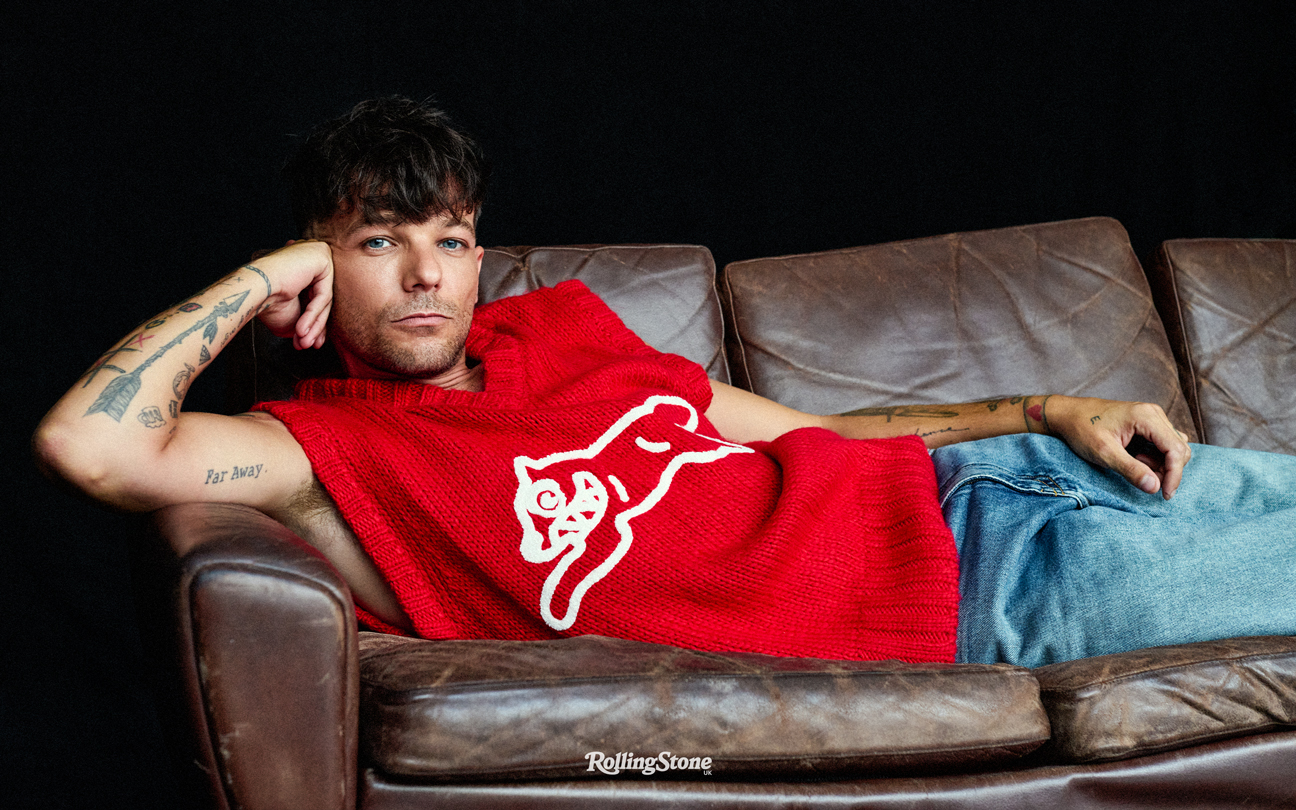
One word keeps coming up when you interview Louis Tomlinson: resilient. He doesn’t exactly wear it as a badge of honour, but he seems content for it to settle into Louis lore. “I would say it’s a word that people associate with me – and more [so] since some of the darkness I’ve had in my life,” he says. “But truthfully, it predates that, and it’s kind of helped me to deal with those things.”
Understandably, Tomlinson is keener to shake off that other word – “darkness” – which he uses as a euphemism for the devastating loss of people he loved: his mother, his sister and his bandmate Liam Payne, who passed away last October. He describes his upcoming third solo album, How Did I Get Here?, which is due next year, as a “sunny departure” from the “darkness that was a bit of the perception with me, musically and also personally”.
When he was in his late teens, Tomlinson called on this resilient streak to carve a role for himself within One Direction, the Anglo-Irish boyband that became the defining pop act of the early 2010s. Realising he wasn’t the group’s flashiest character – with Harry Styles, Zayn Malik, Niall Horan and Payne as bandmates, how could he be? – Tomlinson channelled his energy into songwriting. By the time One Direction went on hiatus in 2016, he had racked up 38 co-writes across their discography, more than any other member. Huge hits like ‘Steal My Girl’, ‘History’ and ‘Perfect’ all have his name on the credits.
And since then, this resilient streak has helped Tomlinson, now 33, build a rock-solid solo career after a slightly wobbly start. Released in December 2016, his debut single ‘Just Hold On’ was a thumping, club-ready collaboration with EDM icon Steve Aoki. Courageously and movingly, he sang it on The X Factor – the show that catapulted him to fame and on which he later served as a judge – just three days after his mother Johannah died of leukaemia. “Feeling so much love around me and my family,” he wrote on Twitter afterwards. “Mum would have been so fucking proud.” Tomlinson’s second single ‘Back to You’ followed in July 2017: it was another boppy collab, this time with DJ-producer Digital Farm Animals and pliable singer-songwriter Bebe Rexha.
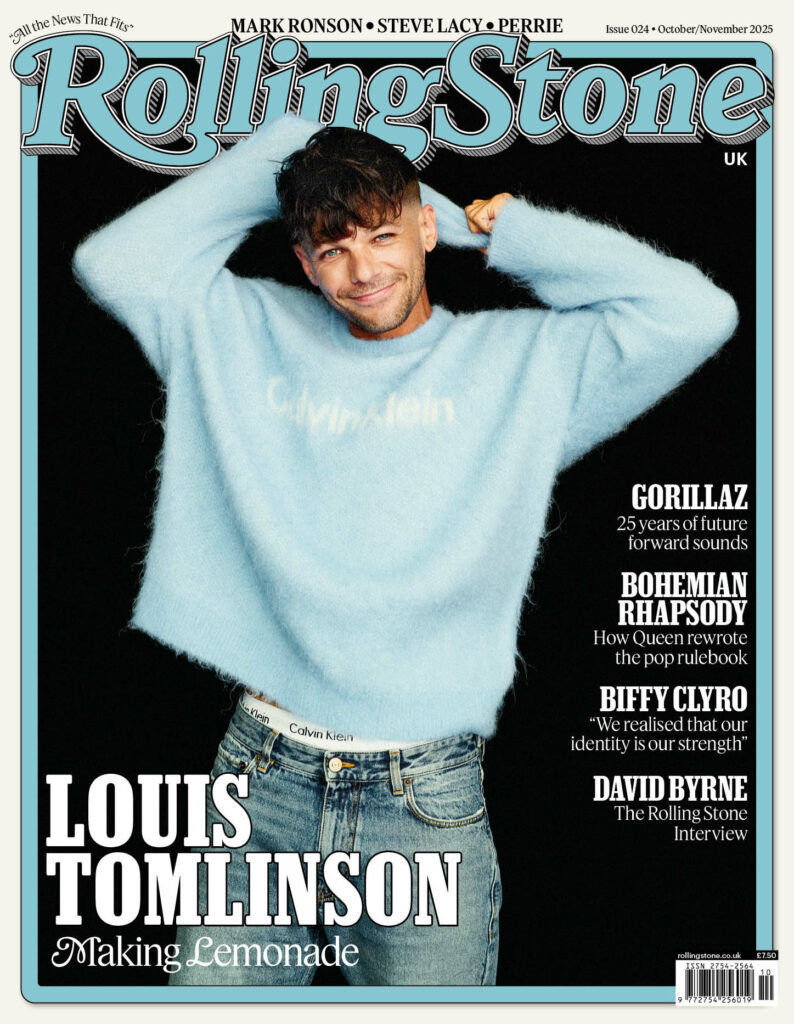
Both songs performed well – they’ve each accumulated over half a billion Spotify streams – but they weren’t particularly distinctive. So, Tomlinson went back to the drawing board and returned in 2019 as an emotionally literate indie-leaning artist who wore his love of Britpop on his sleeve. His fourth single ‘Two of Us’ was a soaring, piano-driven tribute to his late mother. ‘Walls’, the title track from his debut solo album, credited Noel Gallagher as a co-writer because it borrowed from three Oasis classics: ‘Stop Crying Your Heart Out’, ‘Cast No Shadow’ and ‘Acquiesce’. This was kind of brazen given that Noel once called One Direction “fucking idiots” peddling “banal pop music”.
“I thought that was pretty ironic,” Tomlinson says today with an impish smile. “Now, you’re essentially a writer for One Direction.”
Tomlinson had the misfortune to release the Walls album in January 2020 – just as the music business – and the rest of the world – was about to be floored by the Covid pandemic. But, with his usual resilience, he didn’t let this halt the forward momentum. He resumed his world tour pretty much as soon as he could in February 2022, then dropped a second solo album that November. Still underpinned by anthemic melodies and Britpop-style guitars, but looser and more musically varied, Faith in the Future debuted at number one in the UK – three places higher than Walls. Anyone who still viewed Tomlinson as the underdog of One Direction clearly wasn’t paying attention.
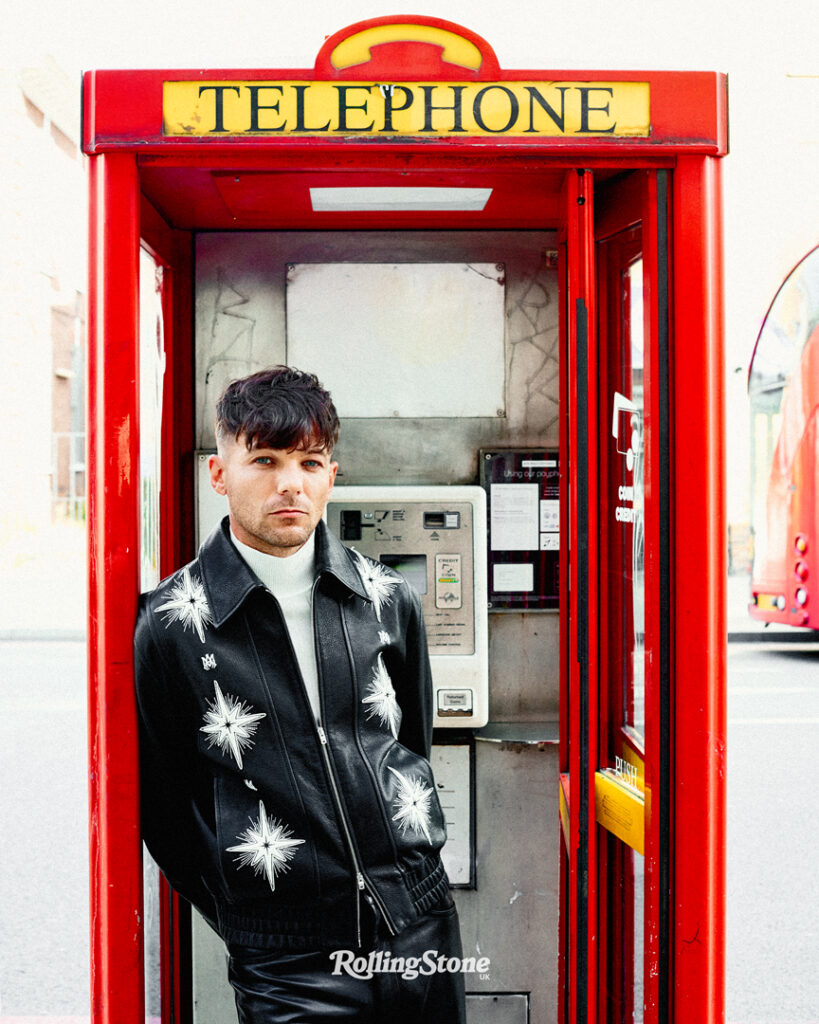
The chart success must have felt validating, but it was as a touring artist that Tomlinson has really earned his stripes with a well-thumbed passport. Last year’s Live album featured renditions of 15 songs recorded in 15 different cities – a subtle flex reflecting the fact that across two world tours to date, Tomlinson has played 170 shows in 47 countries. Along the way, he’s managed to defy the law of diminishing returns that often fells former boyband stars – impressively, he filled bigger venues on his second tour than the first.
“In South America, we were doing some stadiums as well [as arenas] – never in a million years did I think I’d be back in a stadium for a show on my own,” he says. “So the imposter syndrome that sometimes I struggle with, it’s very difficult for it to be so prevalent in situations like that. I think it gave me the confidence [to think] that I can get what I want. I just have to really knuckle down.”
Today, Tomlinson has his imposter syndrome in check. When we meet in the private upstairs room of a north London pub, he looks tanned and relaxed in an immaculate black Nike Jordan tracksuit. He cuts a more confident figure than the last time I interviewed him, back in 2019, and seems pleased when I tell him so. Back then, he was friendly if a little twitchy; today, he’s calmer and happier to make eye contact. “I felt a bit like a deer in the headlights when I first started my solo career,” he admits. “It was very much like I was on this train, and I didn’t know where I was going, but I knew I was going [somewhere] and trying to work myself out as an artist and also as a person. And you know, that had to be done really publicly. But I feel a lot more accomplished now.”
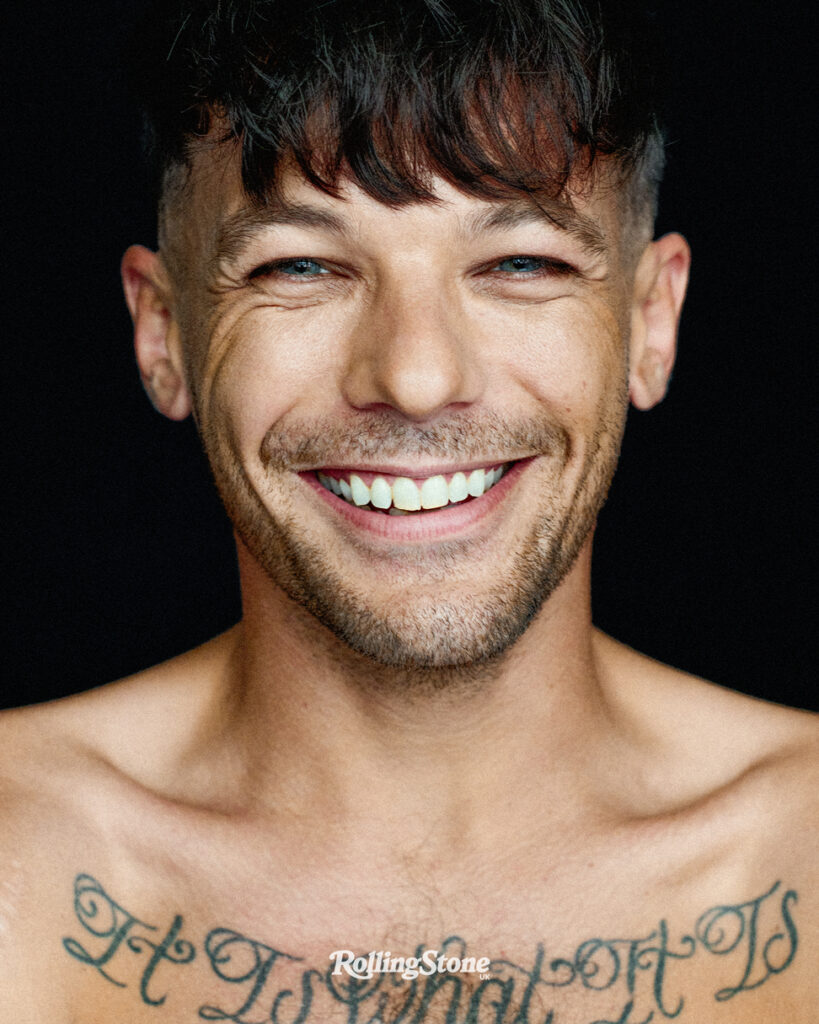
Tomlinson’s upcoming third album, How Did I Get Here?, is shaping up to be his most accomplished yet. He chose swaggering funk-rock banger ‘Lemonade’ as its lead single because “it feels light and summery” but also “sonically ambitious”. It’s certainly an earworm: the enormous chorus will sound terrific when fans sing it back at him in packed arenas. Tomlinson loves the fact that ‘Lemonade’ has “natural live energy” and doesn’t feel “over-produced”, but his personal favourite from the album is ‘Sunflowers’. This lightly psychedelic swirler introduces a new, more languid side to his musical identity, but he’s worried it doesn’t have “quite the right tempo” for radio. “Historically, [getting on the] radio has been a fucking fight for me, so I thought I might as well give myself the best opportunity [with ‘Lemonade’],” he says.
Among the seven songs from the album Rolling Stone UK is given a preview of, there’s another sun-dappled slowburn called ‘Lazy’. But Tomlinson also has some serious bops up his sleeve: ‘Imposter’ is a slinky indie sleaze jam, while the anthemic ‘Palaces’ recalls The Cure at their most effervescent. He seems pleased when I say he’s entered his breezy era. Tomlinson wants this album to “feel like a journey from the mildly dark sonic place” of his last album, 2022’s Faith in the Future, to a much sunnier destination. “I hope it feels like a reflection of how confident I am, but breezy is a real nice way of putting it,” he says. “It’s been a long time since, professionally and personally, I’ve been able to have a little spring in my step. So, hopefully that comes across in the record.”
Tomlinson recorded some of the album in Los Angeles, a city he visits regularly because his son Freddie lives there – Freddie’s mother is the American stylist Briana Jungwirth, whom Tomlinson briefly dated in 2015. He also recorded portions in the English countryside, but the album really took shape during a relaxed songwriting camp in Santa Teresa, a surfing village on Costa Rica’s Nicoya Peninsula. There, he was joined by key collaborators Nico Rebscher, David Sneddon and Theo Hutchcraft (one half of synth-pop duo Hurts) for three weeks of “good food and living the project at a slow pace”. Sometimes they’d be joined on video call by another songwriter, Dave Gibson, but there was no pressure and no pecking order.
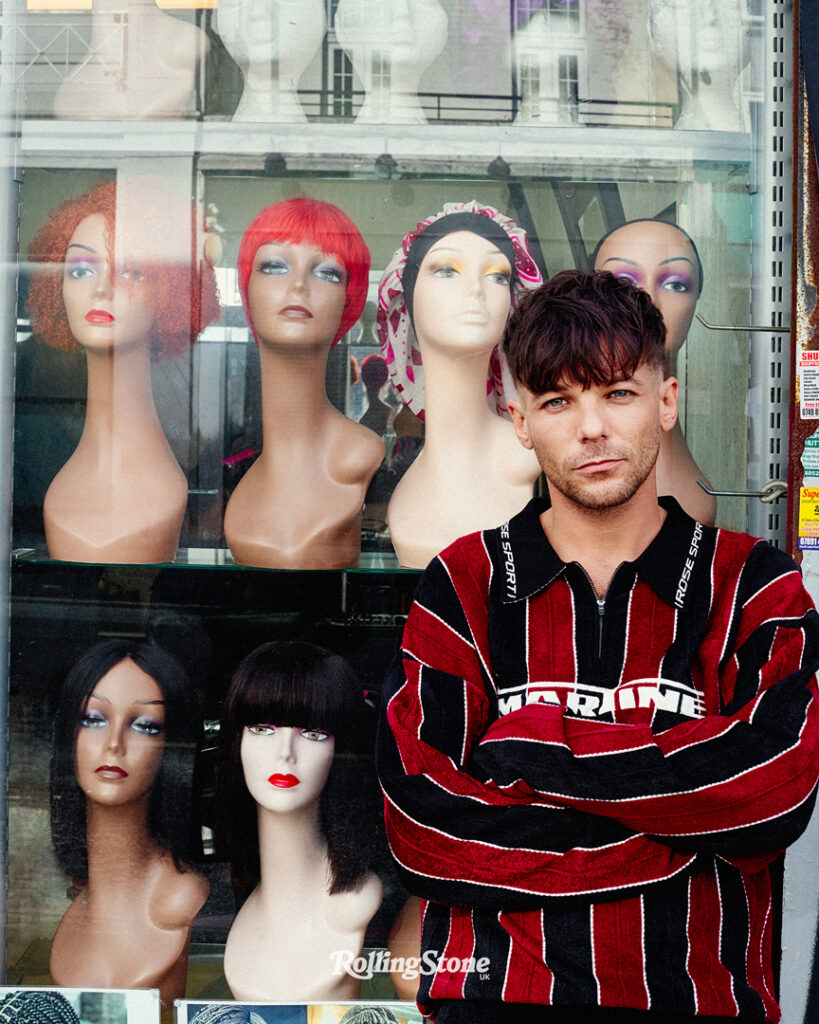
For Tomlinson, it was imperative to spend as much social time with his co-writers as studio time. “What it does for me is build up a lot of trust and confidence in the people that I’m working with,” he says. “What it isn’t about – and I did many of these sessions [in the past] – is being in a room where people are hoping that we write the single. I get that everyone’s got a livelihood, but sometimes in that situation, you can feel more like a means to an end than [like you’re working with] someone who really wants the best for the record.”
It may be Tomlinson’s name on the finished product, but he doesn’t conduct any aspect of his career from the top down. “Ever since being in One Direction, I’ve been searching for this kind of team mentality,” he says. “I’ve done it the same with my live band on tour – we very much move as a unit, and that’s really important to me.”
Though only about 40 per cent of How Did I Get Here? was written in Costa Rica, these sessions changed the shape of the album entirely. “As I’ve got a bit older, I’m really buying into more hippie-ish ideas. I realised I liked the idea of just bathing in that atmosphere and seeing what happened to the music there,” Tomlinson says. “I don’t think songs like ‘Lemonade’, ‘Sunflowers’ and ‘Lazy’ would have happened without Costa Rica.”
Fittingly, there’s a lyric in ‘Sunflowers’ that marks a fault line in the project. “It’s about being sick and tired of smoking in the rain,” he says. “And that’s because I literally spent too long in England with it raining all the time, thinking, ‘I want this record to feel more summery.’ But that wouldn’t have happened if I’d carried on writing in England.”
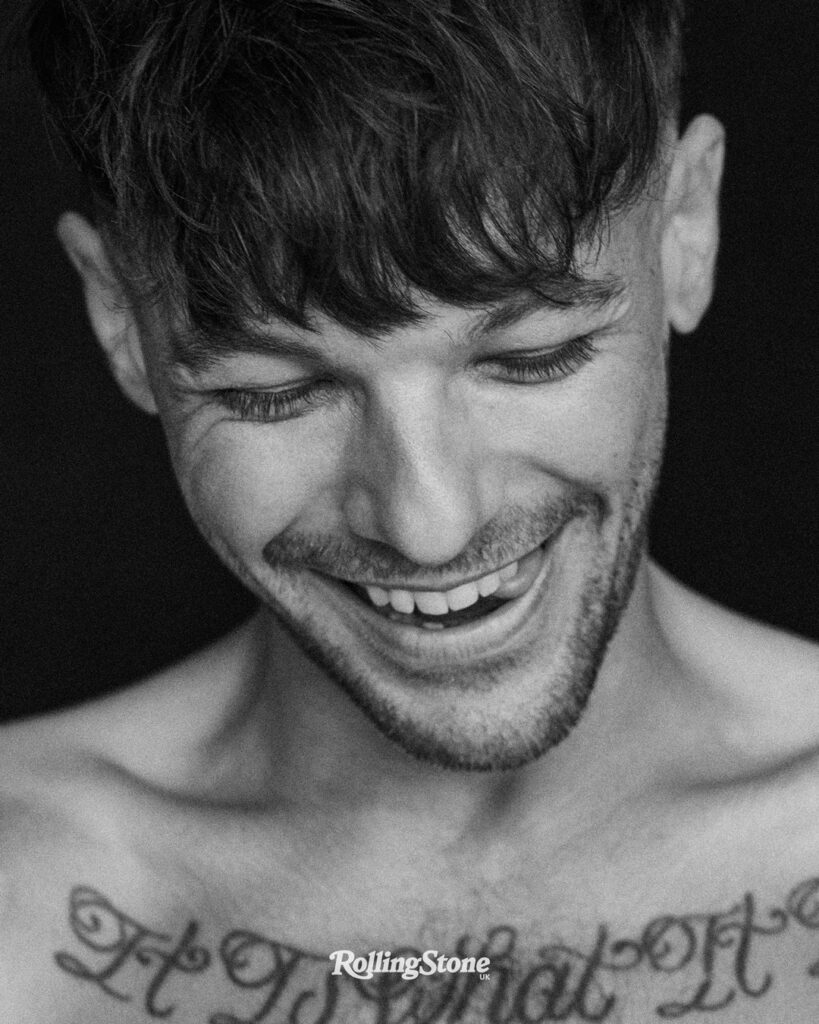
Another track earmarked for the album – one whose title Tomlinson doesn’t want to reveal yet – really telegraphs the more optimistic and “confident” place he’s worked hard to get to. It’s impossible not to admire what he describes as his “glass half full” mentality given that his adult life has been marked by terrible loss as well as stratospheric success. Just over two years after his mother Johannah was claimed by leukaemia, Tomlinson lost his younger sister Félicité to an accidental overdose. Around half a decade later, on 16 October 2024, his bandmate Liam Payne died after falling from a hotel balcony in Buenos Aires. It was a truly devastating moment for Payne’s friends and family, and a generational moment for the millions of Directioners who grew up idolising him.
On 23 July, around a month before Louis and I meet, fans marked 15 years of One Direction with a flurry of social media activity – even the London Underground’s inspirational quotes account, @allontheboard, got involved. On that date in 2010, the five-piece were formed on The X Factor, beginning a truly incredible journey that led to four sellout world tours, seven BRIT Awards and 70 million record sales. Tomlinson has always been proud of the band’s legacy and catalogue – their hits ‘Drag Me Down’, ‘Night Changes’ and ‘Where Do Broken Hearts Go?’ remain staples of his live set. But this anniversary must have provoked impossibly mixed feelings given that the bandmate he called “Payno” is no longer with us.
“Do you mind if I have a smoke?” Tomlinson says when I ask about the anniversary. For the first time in the interview, he springs to his feet, then lights a cigarette. He gives himself a few seconds to gather his thoughts, then speaks a little more slowly than before.
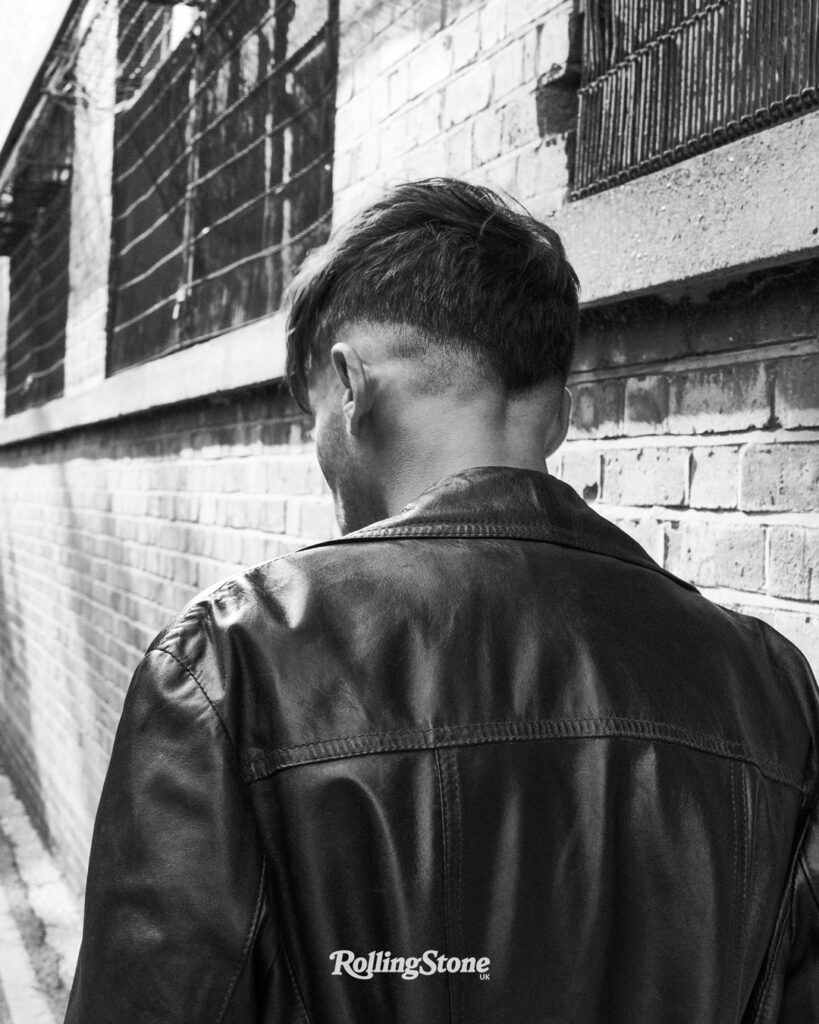
“It was really uncomfortable, actually, the 15th anniversary, because the [collective] feeling to celebrate is as important, if not more important than ever, on behalf of Liam.” On previous 1D anniversaries, Tomlinson says he almost felt a bit “sick of nostalgia”, but this time, it hit different. “You know, there’s still a level in my head [where it feels] unjust and frustrating that he’s not with us anymore. So, it just brought up those feelings, although I’m still living with them anyway.”
On the day, his timeline was filled with clips from old One Direction interviews and videos, which allowed him to “enjoy seeing Liam in that light” – full of youthful charisma and ambition. “It was really, really, impossibly difficult for me to deal with losing Liam,” he says plainly. “Naively, I thought that because at this point, I’m relatively well versed in grief for my age, that it might soften the blow. [That was] super-naive. It’s very different. I’ve never lost a friend before.”
A day after Payne passed away, Tomlinson paid tribute to his bandmate and “brother” in a gracious Instagram post. “For the record, Liam was in my opinion the most vital part of One Direction,” he wrote. “His experience from a young age, his perfect pitch, his stage presence, his gift for writing. The list goes on. Thank you for shaping us, Liam.” Today, he calls Payne the “safest pair of hands” in the band because he had the most pre-1D experience. “We were all just so amateur, but he was already where he needed to be by the time he did his first [X Factor] audition,” he says. “None of us would have admitted it at the time, because you have a lot of pride as a young lad, but we all looked up to him like that.”
Tomlinson points out how he phrased his Instagram tribute carefully in an effort to “set the record straight”. He mentions Payne’s June 2022 appearance on Logan Paul’s Impaulsive podcast, during which he shared some negative memories about his time in One Direction, including an incident in which a group member allegedly “threw him up a wall”. Tomlinson doesn’t go into details but says glumly of the interview: “The press just ran with it.” Payne later apologised for his comments, telling fans in a July 2023 YouTube video: “A lot of what I said came from the wrong place. I was so angry at what was going on around me, and instead of taking a look inwards, I decided to look outwards at everybody else.”
Tomlinson adds that he “got glimpses” of the real Payne in other, “really great interviews” he gave during his solo years. But he was conscious of the fact “there was a lot of bad press around Liam” at times. “Anyone who knew him personally would know how deeply unfair that was,” he says. “Anything that he got wrong in life, Liam – which, by the way, we all do daily – it was never through malice. It was only through miscommunication – him just not being able to express himself in the way he needed to.”
What would he like fans to know about Payne that they might not know already? “He was just a very misunderstood person, I think, from a public perspective,” says Tomlinson. “If there is ever any judgment on his character, I think nine times out of 10, you can reflect on that, and the reflection is that he was someone who just wanted to be liked.”
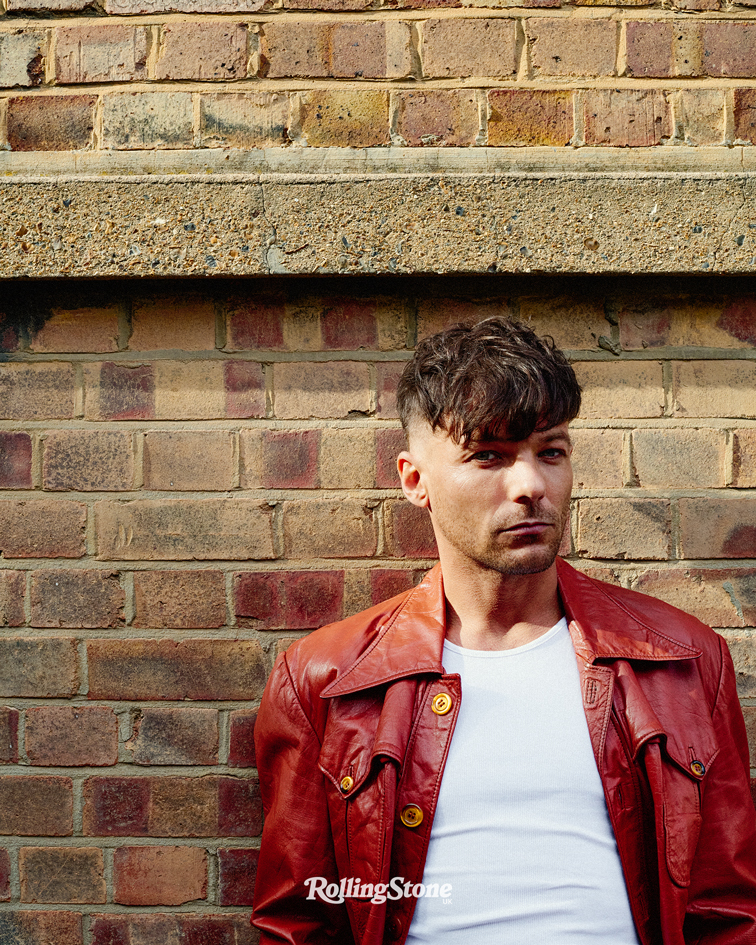
As well as retaining his “team mentality”, Tomlinson has never lost his ability to be a fan – he invariably books up-and-coming indie acts like Sea Girls and Only the Poets as support acts. And although he was in one of the biggest bands of his generation, he’s never lost his passion for one of the biggest bands of the generation before: Oasis. On 4 July, he was lucky enough to watch the Manchester icons kick off their comeback tour in Cardiff.
“I’ve always been rubbish with biting me tongue,” he replies, then proceeds to illustrate his point. “In the run-up, I was really struggling to get excited for it. I am a fucking huge Oasis fan. I’ve been praying year after year that they get back together.” But, like many fans, his enthusiasm was dimmed by the fiasco over the extortionate price of tickets, which saw seats being listed for as much as £350 – around £200 more than the advertised face value. The band said in a statement at the time: “It needs to be made clear that Oasis leave decisions on ticketing and pricing entirely to their promoters and management.”
Tomlinson gives this short shrift. “Regardless of… whoever’s fucking fault, whoever got blamed for it, I thought the stuff with the pricing [of] the tickets was fucking awful. I thought it was disgusting,” he says. “It really, really left a bad taste in my mouth, especially because such a big part of their image, aesthetic and fanbase are [rooted in] not [being] of an affluent background.” They’re a proudly working-class band, I say. “Absolutely. So I found it really tough.” On the night of the gig, he arrived feeling like a “grumpy old man”, but the band’s sheer imperiousness won him over. “It was a great night and I thought they sounded incredible. You felt the cultural relevance,” he says.
Did seeing Oasis back together – and thrilling so many fans – make him contemplate any kind of One Direction reunion? “That was one of the first feelings I got when I was there, but I think it’s more that you’re romanticising the idea than [thinking about] the reality of the situation,” he says. “Things are obviously infinitely more complicated post-Liam. Right now, I can’t foresee a time where I would actually feel comfortable doing that.” Reconvening as a four-piece would “feel like something else, almost”, Tomlinson believes. “Before Liam passed, I kind of always had it in the back of my mind. Like, ‘I’m sure we’ll do something, even if it’s just one big show.’ But now I’d be really surprised,” he says. “I also kind of love that the last time that we were on stage together, Liam was there. That’s just so perfect.”
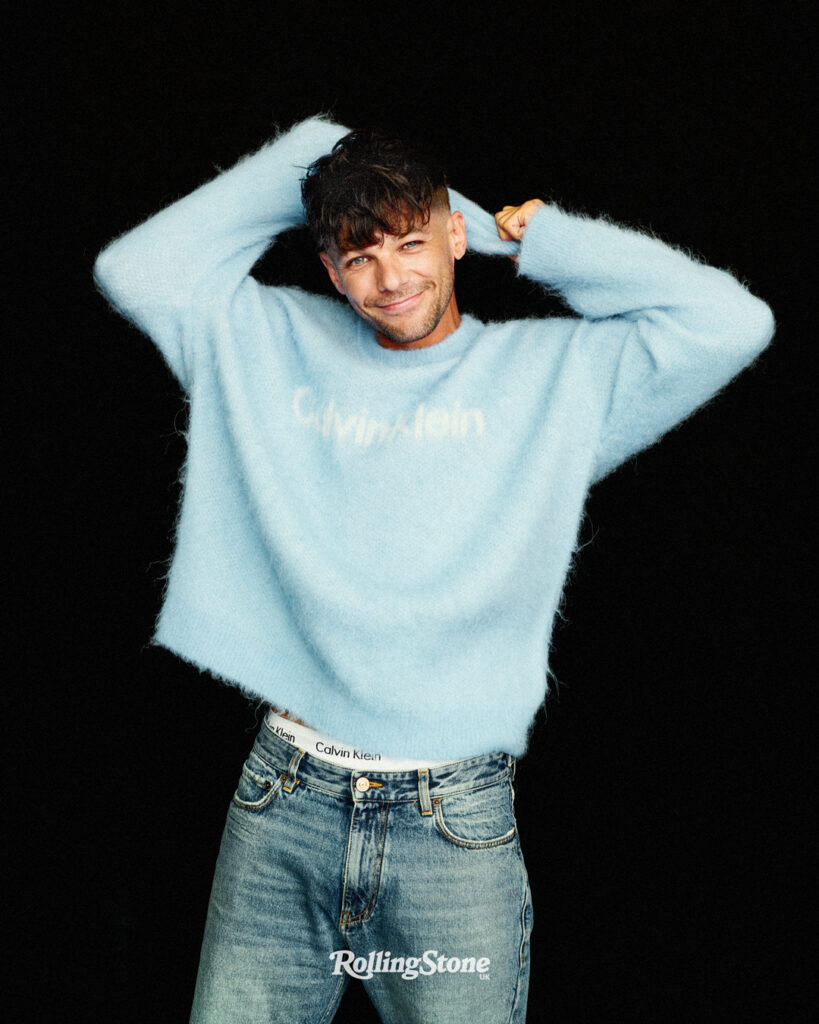
No one taught Tomlinson how to be a pop star who bites his tongue. He grew up in Doncaster, South Yorkshire, where he began “loosely pursuing” music as a teenager – for a time, he sang in a covers band with some schoolmates. At 18, he landed the lead role in a school production of Grease – his sliding doors moment. He’d considered sacking off the audition because it came straight after “a long interview” for a Christmas job at Toys R Us, but his mum offered to ferry him between the two. “She was pretty good like that – she never demanded that I do anything; she just said, ‘I’ll make it easy for you,’” he recalls.
His star turn as Danny Zuko gave him enough confidence to have a second crack at The X Factor, then the biggest show on British TV. This time, unlike the first, he made it past the auditions. Then fate dealt him an ace. At the boot camp stage, judges Simon Cowell and Nicole Scherzinger made the fortuitous decision to form a boyband from five male hopefuls who had auditioned as solo artists. Suddenly, Tomlinson was a member of One Direction alongside four other talented wannabes from way outside the M25: Malik and Styles were fellow northerners, while Payne hailed from the West Midlands and Horan had flown over from Ireland.
Distracted by the prospect of pop fame, Tomlinson flunked his A-levels, but let his mum think he’d done OK. “Now, I know from hindsight that it’s not really like this, but as a young lad from Doncaster, I already thought I’d made it when we got onto the [X Factor] live shows,” he says. “I just thought, ‘I don’t need to worry about school anymore.’ He finally came clean when One Direction made it through to that year’s grand final, where they finished third behind pop-rock troubadour Matt Cardle and soulful belter Rebecca Ferguson.
“My mum was never hard on me with anything other than schoolwork – she really wanted a better life for me,” he says. “But I think at that point, we were both a little bit away with the fairies. It was like, ‘Well, hopefully the exams won’t matter now.’” As it turns out, they weren’t away with the fairies at all: One Direction were snapped up by Simon Cowell’s Syco Records; nine months later, they topped the charts with their bouncy debut single ‘What Makes You Beautiful’. Still, what might he have done if music hadn’t worked out? “Truthfully, I don’t know. I wanted to go to university and be a teacher,” he says. “But I’m not sure if I’ve got the brain to get those grades.”
Tomlinson says that when he’s 60, he can see himself as a Sunday league football manager. Before then, he has one eye on a less unlikely pivot. “One day, once things maybe start cooling down in my solo career, I will do something more in music management,” he says. “It’s kind of akin to what drew me to teaching or being a football coach. I like the idea of helping people develop.”
It’s easy to see why a behind-the-scenes move might be appealing. The glare may be less intense than in the One Direction years, but you’d still do a double-take if you spotted Tomlinson picking up a ready meal in Tesco. As he’s photographed on the streets of Haggerston for his Rolling Stone UK cover shoot, an eager fan captures a shot from the passing top deck of a passing 243 bus that soon enough ends up on TikTok. Minutes later, a young lad’s voice calls out “Louis!” from the window of a nearby block of flats.
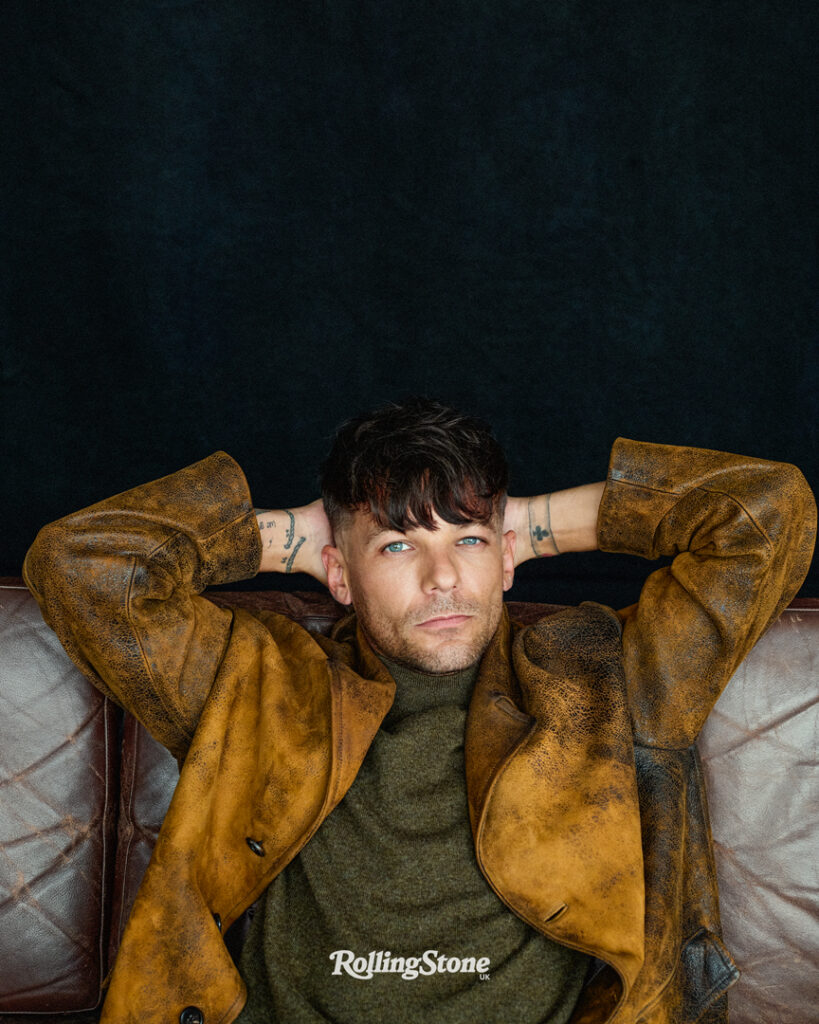
Would he go downstairs now for a drink if he wanted to? It’s 2pm on a weekday, so the public bar would probably be quiet. “Yeah, I would. It’s just always never not a thought,” he replies. “Sometimes I think that if I read these things, I’d be thinking, ‘Well, fucking chill out, you’re not that famous.’ It’s not even about that. It’s just sometimes, when you’ve lived it so long, just the idea of [putting yourself out there] can get a little bit on top of you.”
At this point, Tomlinson brings up an Instagram post that Robbie Williams shared in April, in which the ‘Rock DJ’ singer wrote about being asked for selfies by cabin crew on a recent flight. One crew member told Williams he was “much nicer” than another celebrity on board who had said no to photos. “That made me bristle. I know that other celebrity – and he’s a lovely lad,” Williams wrote. “Who knows what was going on in his world that day?”
“Robbie never actually called me out on it, but I’m sure I was who he was talking about,” Tomlinson says, before explaining why incidents like this have made him more wary. “I was right in the middle of my grief [for Payne]. I felt cross with the world, to be honest,” he says. “What’s tough in that situation, psychologically, is that you know there’s no answer other than ‘Sorry, I’m a cunt.’ Because you know there’s no excuse you can make that can kind of alleviate that blow.” Tomlinson offered to sign something for the crew member instead but points out that “people are less excited about signatures these days because they can’t put them online like a photo.”
Tomlinson says situations like this could “end up putting you off leaving the house next time, because you just think, ‘All I was doing there was trying to protect myself.’” But he always tries to “push through” this urge to withdraw because he believes “the best way of staying mentally healthy is actually letting the world in”. He was always the One Direction member who most enjoyed interacting with fans, both online and in person, and this sense of “collective endeavour” is still what drives him.
“I’ve had shows where I’ve been feeling down in the dumps and shit, and then I’ve thought, ‘Have my fans got some idea that I wasn’t feeling too good?’ Because they’ve completely transformed the way I’m feeling about myself,” he says. “You know, instead of [thinking] about what a radio plugger said and why [some DJ] didn’t play the song, I can look into the eyes of the girl on the front row and literally feel what the show means to her.”
Meaningful moments like this are why Tomlinson has ended up here: launching his brightest and most vital solo album to date. Whether ‘Lemonade’ and ‘Sunflowers’ become radio staples or not, he knows they’ll hit the spot when he sings them to 20,000-plus fans at an arena show. “I would have struggled to say six years ago that I’m an artist: an individual artist in my own right,” he reflects. “But I definitely feel like I can now.”
CREDITS
Stylist: Helen Seamons
Grooming: Krystle Gohel using Bumble & Bumble
Photography Assistant: Declan Slattery
Styling Assistant: Sasha Crosby
Digital: Jamie Monahan
Post-production: Alexandra Heindl
